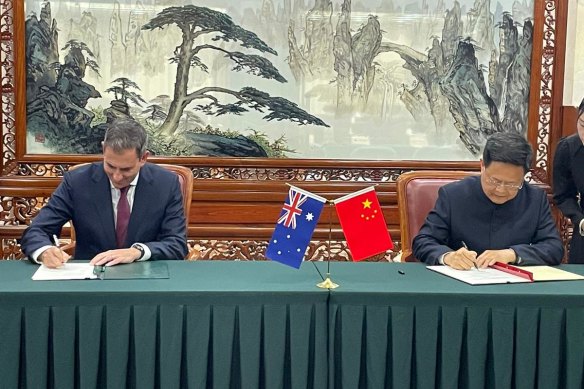
This week Jim Chalmers became the first Australian treasurer to make an official visit to China since 2017 when Scott Morrison held the job.
That seven-year hiatus underscores the hostility that has marked the Sino-Australia relationship for much of the past decade.
Even so, China’s economy still has a bigger influence on Australia than any other. The trade relationship between the two – worth $327 billion last year – supports tens of thousands of Australian jobs and delivers billions of dollars to the federal coffers each year.

Jim Chalmers with his Chinese counterpart in Beijing.Credit: Lisa Visentin
Chalmers’ presence in Beijing is an important marker of improving ties. Face-to-face meetings between those at the highest level of the Australian and Chinese governments are the best way to manage this crucial relationship.
On Thursday Chalmers co‑chaired the 2024 Australia‑China Strategic Economic Dialogue with Zheng Shanjie, chairman of China’s National Development and Reform Commission; this top-level interaction, which has been suspended since 2017, will now resume.
“It’s a very good outcome for Australia that we will be hosting our counterparts next year to continue to advance these discussions on areas like trade and investment, decarbonisation of our industries, business engagement,” Chalmers said.
Given the uncertainty over China’s outlook, the visit was a timely opportunity for the treasurer to discuss economic developments in person with key Beijing policymakers.
Federal Treasury is forecasting Chinese growth to remain below five per cent for the next three years. That would be the weakest period of economic expansion in China since reforms to opening up its economy in the late 1970s.
According to Chalmers every one-percentage-point drop in China’s GDP growth costs Australia roughly a quarter of a percentage point of our growth, or about $6 billion in lost output.



























